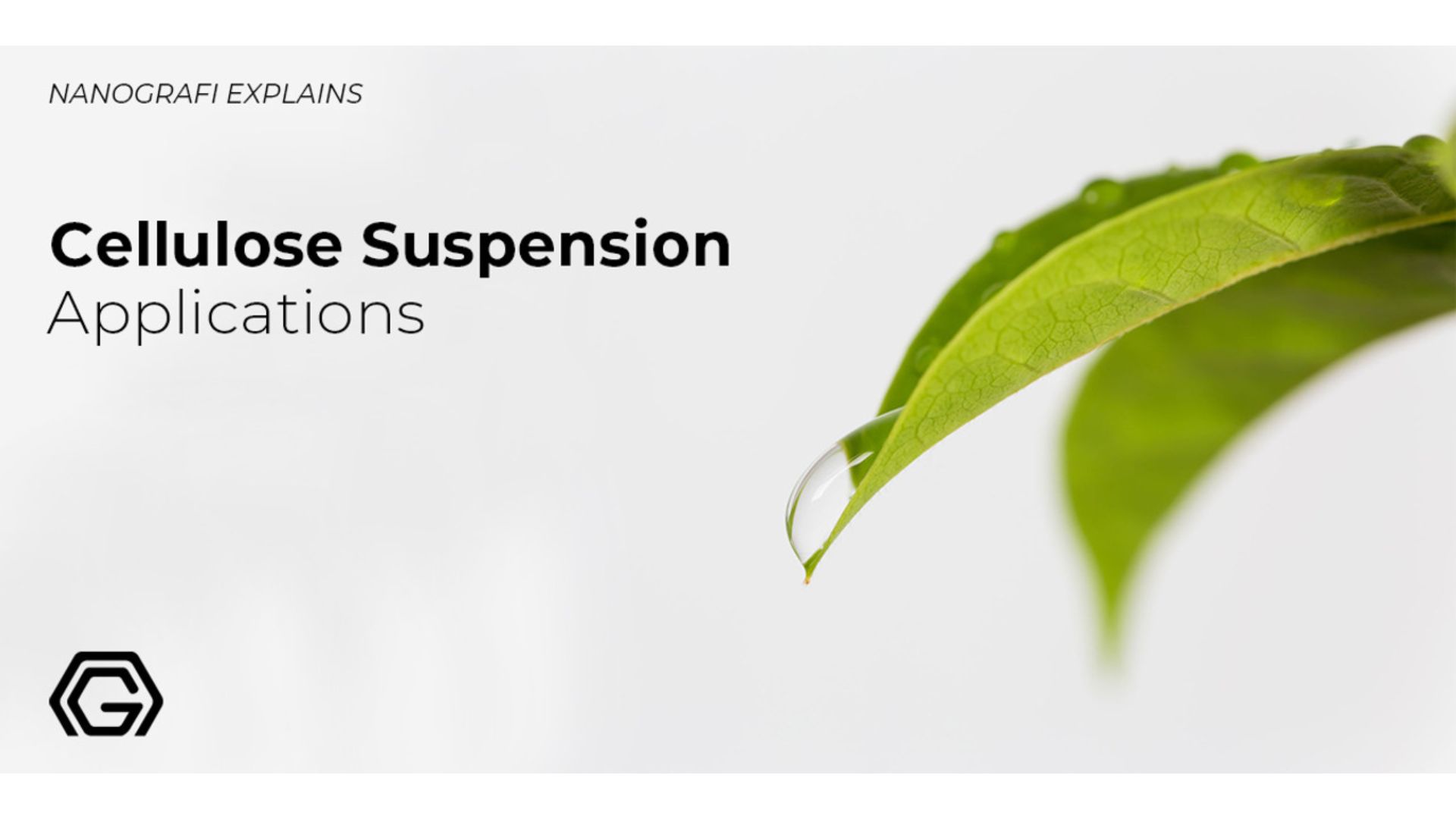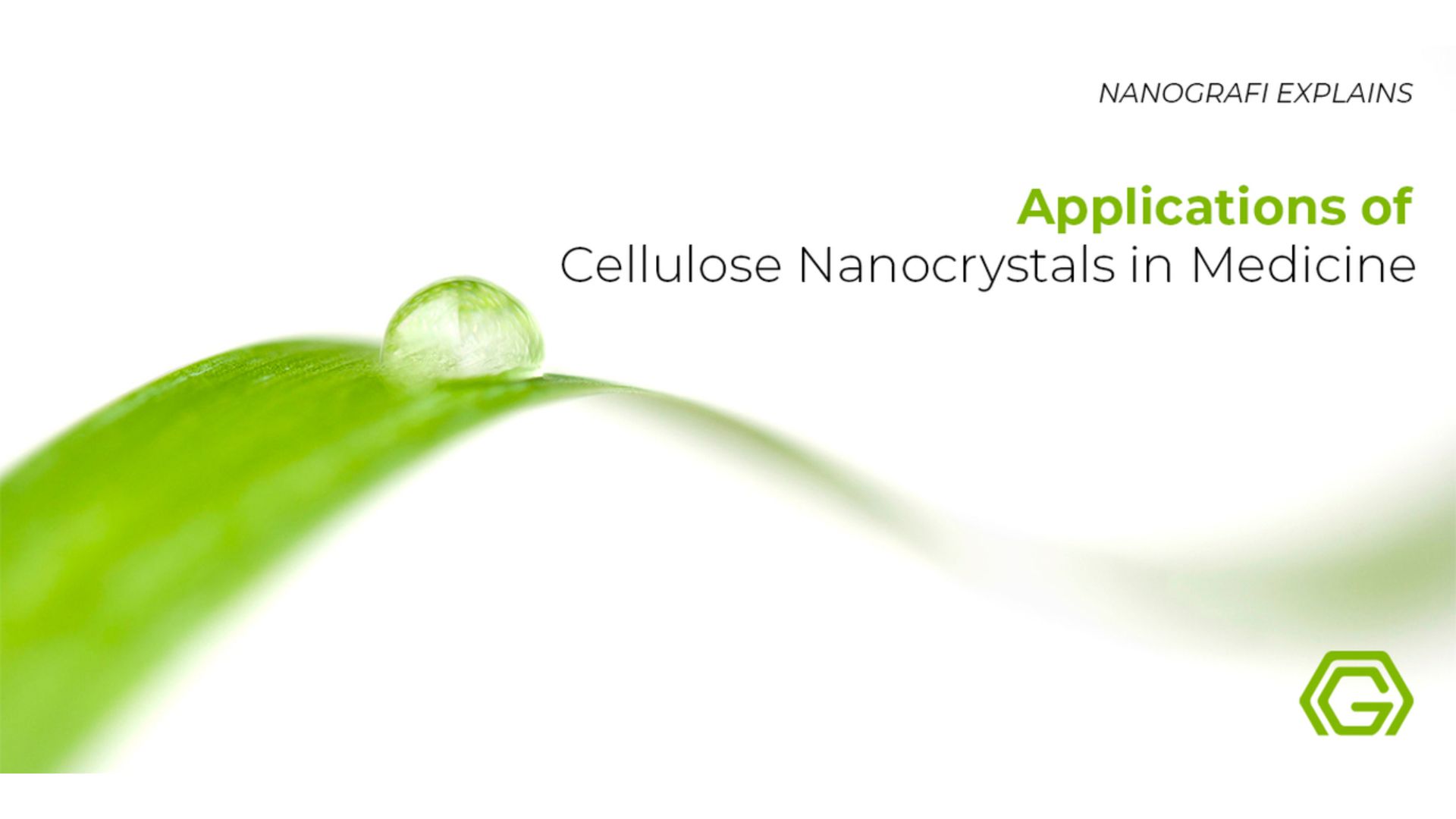Nanocellulose – Cellulose Suspension
There has been great interest in the use of biomass because of their potential for renewable energy and materials.
Nanocellulose has recently attracted interest and prominence as nanostructured material because of the latest developments in nanotechnology. It is extracted from cellulose that is the most abundant natural polymer.
Introduction
Now it is being used to produce a range of nanocellulose materials that have at least one dimension with nanometer range. A lot of research is being conducted to synthesize nanocellulose on a large scale. These materials have miraculous properties and are extensively useful for various industries, from packaging to electronics industries. Moreover, these materials are carbon-neutral, biodegradable, sustainable, non-toxic, and truly green nanomaterials that can be used on a large industrial scale without impacting our environment.
Characteristics of Nanocellulose
Nanocellulose consists of cellulose particles/fibrils that have less than 100nm width or diameter. It is a lightweight but solid substance that is extracted from plant matter. This new miraculous material is pseudoplastic that astonishingly possesses the properties of specific kinds of fluids or gels that are thick in normal conditions. Nanocellulose's lateral dimension ranges from 5 to 20nm, while the longitudinal dimension varies from a few 10's of nanometers to several microns.
Cellulose is the main source to obtain nanocellulose or cellulose suspensions. Lignocellulosic material or semi pure fibers contain cellulose that goes into the making of nanocellulose with great characteristics. Lignocellulosic material is, in fact, plants that contain cellulose, hemicellulose, and lignin. Lignin, with its binding function, is the component that offers the stiffness, strength, and protection to the cell wall. There is a strong hydrogen bonding present between the adjacent glucose units in cellulose that gives these materials a very compact structure, a tightly packed network of cellulose fibers, hardness, toughness, strength, and antibacterial properties.
These properties of cellulose make it an ideal material to be exploited in several applications, and nanocellulose is obtained for this very purpose from natural cellulose. Nanocellulose is biodegradable, lightweight with 1.6 gm/cc density, and 10 GPa of high tensile strength that is very much comparable to cast iron. Moreover, its reactive hydroxyl group makes it very fruitful for use in several applications because of the surface functioning of the group.
Nanocellulose materials are of three main types- nanofibrillated cellulose (NFC), cellulose nanocrystals (CNC), and bacterial nanocellulose (BFC). These materials also have other distinctive properties such as tuneable surface chemistry, crystallinity, high mechanical strength, barrier properties, high aspect ratio, biodegradability, non-toxicity. Moreover, its rise as a renewable green substance along with the aforementioned properties, these materials have become the number one choice for food packaging, coatings, fillers in composites, and myriads of other usages in industrial applications that will remarkably influence and transform the commercial world.
History
Nanotechnology has attracted huge interest in recent years in many industries because it has opened the new doors for the industries with numerous possibilities. Nanocellulose or cellulose suspensions are among the most recent miracle of nanotechnology. Through chemical modifications or mechanical treatments, cellulose can be successfully transformed into nanofibrils (CNFs) or cellulose nanocrystals (CNCs). These newly extracted materials have astonishingly different properties as compared to other materials such as carbon fibers, Kevlar, stainless steel, etc.
A lot of research is going on the nanocellulose, and it is not yet ready for commercial purposes. The very first production unit of CNC was established in 2012 by Celluforce in Canada. They produce about one tonne of CNC per day. Nowadays, there are several other pilot plants for nanocellulose, but the very first pilot plant for the very purpose was established in Innventia in Sweden in 2011. Later on, the first plant in the USA was established in 2012 in Madison. A unique pilot plant was established in 2016 in Ornskoldsvik in Sweden.
A pilot plant is developed with the aim to commercialize the nanocellulose materials by providing research and working qualities of this miraculous material to researchers and early adopters of the latest nanotechnology. These unique biomaterials have been a topic of extravagant research since the early days of its introduction in the 1980s. The drive towards achieving a more stable and sustainable economy has also led to great attention towards nanocellulose for the development of this substance and its use in the applications and products.
To get more information about cellulose suspension,
you can read our blog post here.
Properties of Nanocellulose
Nanocellulose has remarkable physical and chemical properties. It has lightweight, electrically conductive, non-toxic, and its raw material (cellulose) is the most abundant natural polymer found on earth. It can be produced on very large scales in a very cost-effective way. Along with these remarkable characteristics, it has several other properties that are listed below.
Dimensions and Crystallinity
It is very hard to measure the exact dimensions and crystallinity of the nanocellulose because of the entanglement of the fibers and difficulties to locate both ends of an individual fiber. Moreover, nanocellulose suspensions are not homogeneous substances, and they contain various structural components besides cellulose nanofibrils and nanofibril bundles. However, according to several researchers, nanocellulose's lateral dimension ranges from 5 to 20nm, while the longitudinal dimension varies from a few 10's of nanometers to several microns. Cellulose also exhibits a cellulose crystal 1 organization that remains unchanged in nanocellulose. The estimated value of the degree of crystallinity is around 63%.
Mechanical Properties
Nanocellulose suspensions have remarkable stiffness (140 to 220 GPa) that are comparable with Kevlar but easily exceeds glass, both of these materials are used to reinforce plastics. They also exhibit high stiffness and high strength that exceeds stainless steel.
Viscosity
The rheology of nanocellulose has revealed that at all concentrations of nanocellulose between 0.125% to 5.9%, the storage and loss modulus were independent of the angular frequency. The shear-thinning property (the decrease of viscosity when shear forces are introduced upon the nanocellulose suspensions) of nanocellulose suspensions is remarkable and highly useful for coating applications.
Bulk Foam and Aerogel Characteristics
Nanocellulose has the ability to strengthen starch foams through its nanofibrils. Foams and aerogels are being used as porous templates. Moreover, these porous foams can also be compressed to produce strong magnetic nano papers that have potential advantages for use as a functional membrane across various applications.
Barrier Properties
Crystalline regions in semicrystalline polymers are gas impermeable. Nanofibers also have the ability to form a highly dense network that is tightly held together by strong inter-fibrillar bonding. Because of the high crystallinity, along with the aforementioned qualities of the nanocellulose suggest that nanocellulose may also act as a highly efficient barrier material.
Other Properties
It also exhibits very interesting optical and rheological properties and ease of surface modifications.
Applications of Nanocellulose – Cellulose Suspensions
Nanocellulose can be used to fabricate bionanocomposites such as starch plastics, polylactides, and bacterial polyesters for use across several industries. There are two main types of cellulose-based biocomposites – structural and nonstructural biocomposites. Both of these types have found several uses in different industries such as paper, packaging industries, tiles, ceiling, doors, furniture, etc. They are also widely used in construction, automotive, pharmacy, electronics, and cosmetics.
Composites and Fillers
Nanocellulose has displayed very promising properties to be used as reinforcing agents for the processing of bionanocomposites such as foams, coatings, films, etc.
Paper and Packaging
Nanocellulose has replaced synthetic polymers extracted from petrochemical resources in paper and packaging industries. Exceptional properties of nanocellulose, such as nanoscale dimensions with water and gas barrier characteristics, are remarkably useful for this purpose. Furthermore, it is extracted from a renewable natural source. Hence it is cost-effective and non-toxic, which makes it highly useful for food packaging. A lot of literature has emphasized that nanocellulose can be used as a reinforcing agent in nano clay and polylactic acid matrix, and the resulting products have more fruitful oxygen and water barrier properties, making it highly efficient and effective for packaging industries.
To get more information about the utilization of cellulose nanocrystals,
you can read our blog post here.
Electronics Industry
The enhanced conductivity and flexibility of the nanocellulose make it a potential candidate for use in the electronic industry. For example, polyaniline nanocellulose can be used as paper-based sensors, conductive adhesives, electronic devices, and flexible electrodes. They can also be used in paper bases energy storage devices having high charge and discharge rate capabilities, cycling performance, and high cell capacitances. Flexible organic electronics is another area of electronic industry where nanocellulose has found its use. They are also being used in other electronic appliances such as electronic displays and windows, nanocellulose based sensors that are highly useful to detect stress levels of the bridges, etc.
Biomedical Applications
Nanocellulose has a high surface area to volume ratio, modifiable surface chemistry, and high strength. These properties make it suitable for materials for use in biomedical technology and applications. Nanocellulose reinforced hydrogel composites have the capabilities to enhance the mechanical properties for polymeric gel and hydrogel production with enhanced pH sensitivity and mechanical properties, making it highly fruitful for use in novel pharmaceutical and gene delivery applications. Recently, a lot of research is being conducted to use nanocellulose as a scaffold for tissue engineering applications.
Food
Nanocellulose has also found its use in the food industry where it is being used as a low-calorie replacement for carbohydrate additives that were previously used as suspension stabilizers, thickeners, and flavor carriers in various food products. It is also being used in the production of puddings, wafers, soups, chips, crushes, etc.
Hygiene and Absorbent Applications
Nanocellulose has also been extensively used as super water absorbent materials. It can be used in wound dressing, sanitary napkins, tampons, kitchen towels, etc. in the form of freeze and dried nanocellulose aerogels.
Medical and Pharmaceutical Applications
- Powdered nanocellulose can also be used in pharmaceutical formulations as an excipient
- Intestinal disorders are being treated with tablets that are comprised of dry and solid nanocellulose
- It has also found its use in the medical field for leukocyte free blood transfusions
- Cryo-structured gels with improve elasticity prepared from nanocellulose are suggested to be the best substances for biomedical and biotechnological applications
Cosmetics
In the cosmetic industry, nanocellulose is being used as composite coating agents for eyelashes, eyebrows, hair, and nails.
Other Vital Applications
- Ultra-white coatings where it is used as a highly scattering material
- Lightweight body armor and bulletproof glasses
- Corrosion inhibitors
- High flux and loudspeaker membranes
- Tobacco filter additives
Conclusion
Nanocellulose has become a material with immense significance because of its lightweight, high strength, and other remarkable characteristics. Therefore, researchers and industrialists are conducting a lot of research to analyze and explore different manufacturing processes and applications of Nanocellulose suspensions. The day isn't far when the ongoing commercialization of nanotechnology will touch the summit and nanocellulose will be fully used across several industries. The biggest advantage of it is that it is biodegradable, and its main source is cellulose that is most abundantly found natural polymer. Hence, it is cost-effective and also environment friendly because it replaces the petrochemical-based materials used in the industry. Although the use of nanocellulose at the commercial level is at a very initial level, it has all the potential and prerequisite characteristics to be fully exploited in the future for the service of mankind.
To get more information, you can visit Blografi.
References
https://www.sciencedirect.com/science/article/pii/S1369702113001958
https://www.ncbi.nlm.nih.gov/pmc/articles/PMC6389799/
https://en.wikipedia.org/wiki/Nanocellulose
https://www.intechopen.com/books/cellulose-fundamental-aspects-and-current-trends/crystalline-nanocellulose-preparation-modification-and-properties
Recent Posts
-
Nanocomposites in Food Packaging
The utilization of nanocomposites in food packaging represents a significant advancement in the fiel …19th Apr 2024 -
What is the Difference Between 7075 and 6061 Aluminum Alloy?
When comparing 7075 aluminum alloy to 6061 aluminum alloy, it's essential to understand their disti …5th Apr 2024 -
Iron-Air Batteries: The Ultimate Guide
Iron-air batteries represent a significant breakthrough in energy storage technology, offering a sus …29th Mar 2024








